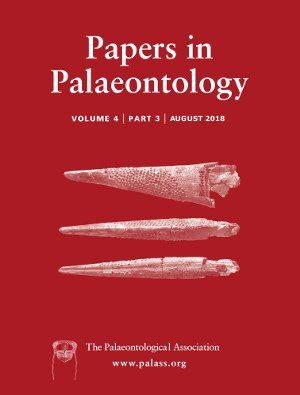Reg. Charity No. 1168330

Burnetiidae is a family of basal therapsids that is known from sequences of late Permian (Lopingian) age from southern and eastern Africa and European Russia. Recent discoveries of related genera within the broader clade Burnetiamorpha have added to our understanding of morphological variation in the group but have eroded the list of characters defining the family Burnetiidae. We describe a new burnetiid taxon, Leucocephalus wewersi gen. et sp. nov., and argue that Burnetiidae can be defined by, among other characters, the presence of two bosses on the ventrolateral surface of suborbital bar and zygomatic arch, high skull angulation between the orbits, and a median frontal crest that becomes wider and lower posteriorly. The new specimen was found in the early Wuchiapingian Tropidostoma Assemblage Zone of the Main Karoo Basin and, along with previous discoveries, indicates that the family reached its greatest diversity and abundance in the early Wuchiapingian. Diversity declined into the later Wuchiapingian and Changhsingian. Although the clade Burnetiamorpha, including the family Burnetiidae, contains at least 11 genera, each of these is exceptionally rare, with most represented by only one specimen. This could be attributed to a genuine ecological characteristic or may be the result of biogeographical factors, particularly if the Main Karoo Basin was on the periphery of their range.